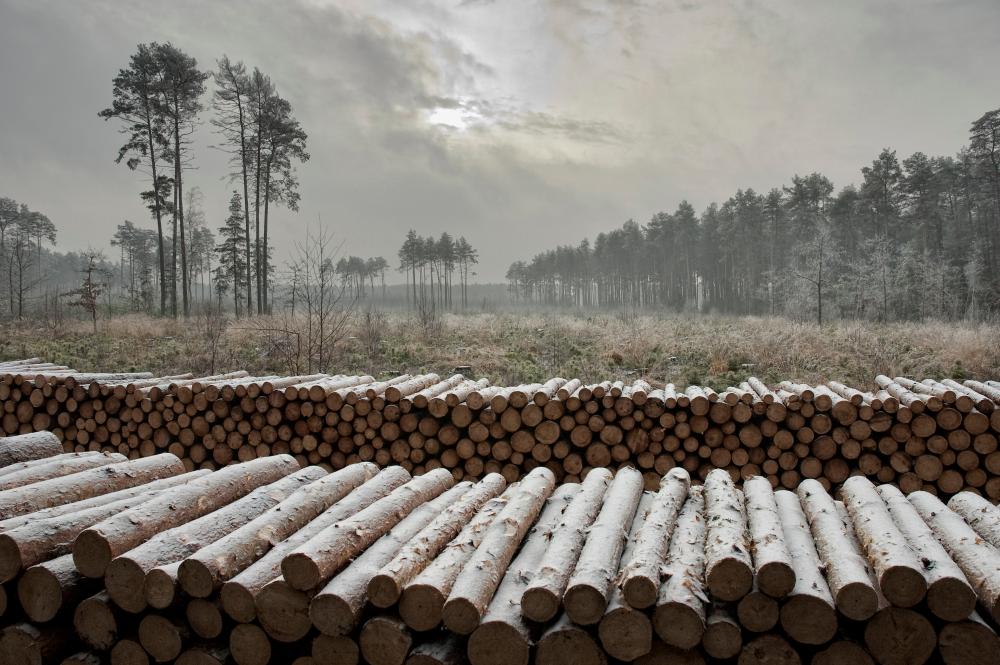 Asset Publisher
Asset Publisher
Sale conditions
Sale conditions of wood are specified by the regulation of Director – General of the Sate Forests.
Within the framework of the individual sale , the foresters try to meet the fast growing demand, because more and more people use wood in order to heat their houses. Contrary to general opinion, these are not only village people, even though they prevail among recipients. The growth of firewood demand is the result of occurrence of new housing estates built in the suburbs of large agglomerations, where houses are usually equipped in fireplace heating installations.
Firewood is not only the most ecological heat source, but also is much more attractive in respect of relation of price and electric efficiency, rather than cola, oil, gas or electric power.
In recent years, the Sate Forests increased the sale of firewood of one third – up to over 4 million cubic meters annually. Firewood is not only the most ecological heat source, but also is much more attractive in respect of relation of price and electric efficiency, rather than cola, oil, gas or electric power. Some of customers choose already prepared and cut into pieces wood, the others very willingly obtain it by themselves after arranging all details and fulfilling particular safety conditions, and after paying the fee; that concerns mainly so called "thinnings". Such a raw material is very cheap, that is why many people from village areas profit from such possibility.
 Asset Publisher
Asset Publisher
 Asset Publisher
Asset Publisher
Rezerwaty
Rezerwaty
Na terenie Nadleśnictwa położone są 2 rezerwaty przyrody.
Na terenie Nadleśnictwa położone są 2 rezerwaty przyrody: „Cisy w Łebkach" oraz „Cisy nad Liswartą". W rezerwatach głównym przedmiotem ochrony jest naturalne stanowisko cisa pospolitego Taxus baccata. W tej części Polski w niedalekiejodległości znajdują się rezerwaty:„Cisy koło Sierakowa" na terenie Nadleśnictwa Lubliniec oraz „Cisy w Hucie Starej" na terenie Nadleśnictwa Siewierz.
1. „Cisy w Łebkach" - głównym przedmiotem ochrony jest cis pospolity.Podczas ostatniej inwentaryzacji w 1996 roku naliczono 8 egzemplarzy cisa 6-8 m wysokości, na ogół krzaczastych, wielopędowych, pojedynczo zamierających. Niezależnie od stanu dorosłych osobników, na szczególną uwagę zasługuje fakt odnawiania się cisa w sposób naturalny. W rezerwacie wyróżniono 3 gatunki roślin objętych ochroną całkowitą: wawrzynek wilczełyko, widłak wroniec i liczydło górskie oraz częściową ochroną: porzeczka czarna i kruszyna pospolita.
2. „Cisy nad Liswartą" – głównym przedmiotem ochrony jest cis pospolity. Podczas ostatniej inwentaryzacji w 1996 roku naliczono 578 drzewiastych okazów cisa, w wieku 40-110 lat, wysokości 5-20 m. Cisy są dobrej żywotności i odnawiają się z samosiewu. Naliczono wtedy 110 sztuk siewek cisa. W rezerwacie stwierdzono ponadto gatunki objęte ochroną całkowitą: wawrzynek wilczełyko, ciemiężyca zielona, storczyki męski i szerokolistny, liczydło górskie, rosiczka oraz kilka gatunków objętych ochroną częściową między innymi kruszynę i porzeczkę.







